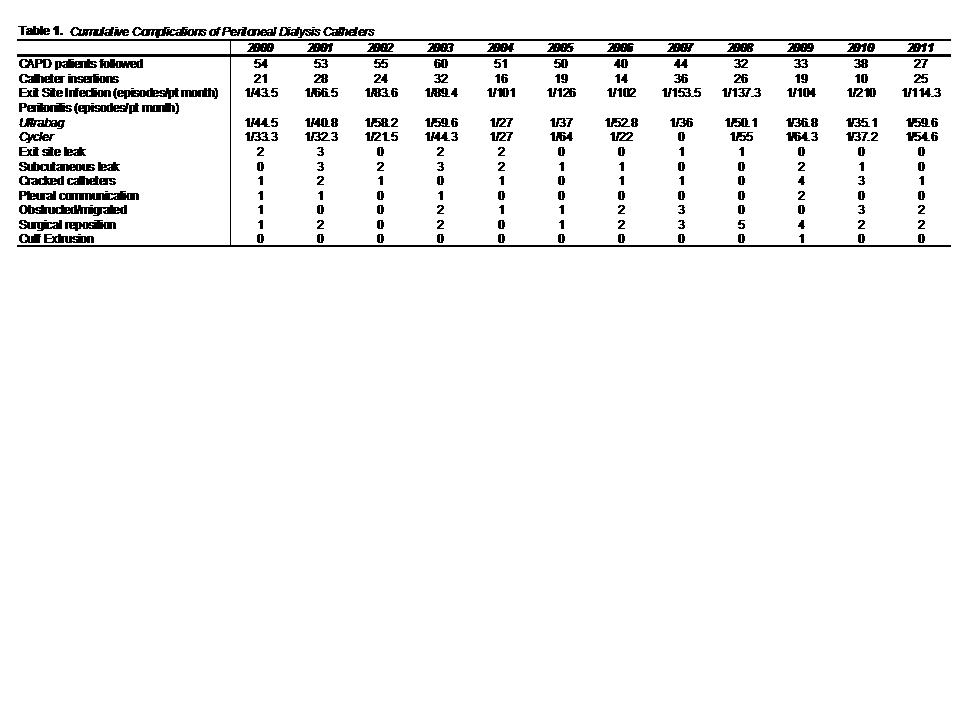|
Back to Annual Meeting Program
Long-Term Outcome of Double-Cuff Swan Neck Peritoneal Dialysis Catheters Using Mini-Laparotomy Approach
*Patricia S. Cho, *Maria Luongo, *Nahel Elias, *Eliot Heher, Dicken S.C. Ko
Massachusetts General Hospital, Boston, MA
Objective: Peritoneal dialysis is an effective method of renal replacement for end-stage renal disease (ESRD) with good quality of life. Success depends on long-term catheter function without complications; however, there is a paucity of long-term data on optimal surgical technique. Our study focuses on a single approach of catheter placement over the past decade with long-term follow-up.
Design: Retrospective case series with follow-up of up to 11 years.
Setting: Single-institution academic tertiary-care center, hospitalized and ambulatory care.
Patients: Adult patients, age ≥18 years with ESRD managed with peritoneal dialysis using double-cuff Swan neck (D-CSN) catheters placed by mini-laparotomy technique and followed at the Peritoneal Dialysis Clinic at Massachusetts General Hospital (MGH) from 2000-2011.
Interventions: D-CSN catheters were placed by 9 surgeons using a standardized mini-laparotomy with angulated tunnel technique. Longitudinal medical records were reviewed for main outcome measures until peritoneal dialysis was discontinued due to transplantation, conversion to hemodialysis, or death.
Main Outcome Measures: catheter migration, exit-site infection, catheter-related peritonitis, catheter obstruction/migration, surgical repositioning/replacement.
Results: 44.8 patients on average were followed annually. 270 catheters were placed from 2000-2011, with the following complication profile (Table 1). An average of 5.3% annually of catheters required repositioning, with an average of 4.5% annually developing a leak.
Conclusions: We report a very low incidence of complications utilizing a standardized mini-laparotomy with a D-CSN catheter when compared to published data across range of techniques. Results suggest this approach may provide a simple, cost-effective method of placement with minimal learning curve and with favorable long-term complication rates. 
Back to Annual Meeting Program
|
|
